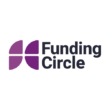Faure to fintech – what music can teach us about communicating the benefits of tech
On the surface Handel or Shostakovich seem a world away from the world of finance. Yet, strange as it may seem, the similarities are there. This is because both the mechanics behind music and the technology underpinning the digital transformation are – unless you’ve had first-hand experience of either – pretty abstract concepts to understand.
For 15 years I predominantly produced classical music documentaries for the BBC. Now, working in the world of communications, I’m amazed at how well the same techniques for communicating and promoting Beethoven or Shostakovich on prime-time TV can equally be applied to the world of fintech.
As we sit at the cusp of a digital transformation, communicating not just the tech but the benefits it brings is of paramount importance not just in encouraging successful adoption of emerging technologies across the financial sector, but explaining these developments to the wider world.
Relaying and explaining abstract ideas is something classical music has achieved well. Complex musical concepts such as the cycle of fifths, equal temperament, the Tristan chord (arguably music’s finest), have all recently had good air time on BBC 2.
This is because hours, sometimes days, are put in behind the scenes to come up with the right wording, analogy or context to bring out the fascinating in the seemingly mundane. When it comes to a broader subject matter, for example Handel’s Messiah or Verdi’s Traviata, audiences were hooked on stories of philanthropy and prostitution but as the credits rolled they raved about oratorio or opera. Result!
Whether communicating with customers, current or potential new clients or the broader public, I believe that’s the trick fintech can pull.
Because we are living through fascinating times with technology profoundly changing the ways we live and work with fintech sitting at the cusp of much of that change. Under the fintech umbrella a wealth of technologies are fast emerging. One such, regulation technology (regtech), may lack a catchy title but in terms of the tech it employs, its future potential, and its place in the fight against financial crime it’s a fascinating area to explore. Fintech itself dominates consumer facing banking, but some argue other areas of the financial sector are a little slower on the uptake. Sparking interest is a key way to engage others, opening doors to further discussion of the benefits a digital transformation can bring.
When it comes to inspiration, it always pays to look beyond the world of finance: Richard Dawkins’ explanation of how bats use echolocation via the analogy of human sight is nothing short of inspired, making the phenomenally complex simple to understand.
As the capabilities of tech power ahead, so the challenge of explaining its function to a broader audience grows as well. Whether conversing with existing customers, stakeholders, partners or potential clients – analogy is a powerful tool. I previously used a prism of light to explain equal temperament. One particularly good analogy for regtech involves a hosepipe and a waterfall.
The real purpose of a concise analogy is that once the basics are grasped, it frees you up to explore the technology in question in considerably more depth. And if the analogy you use can be expanded on, that helps your case all the more.
When it comes to fintech, too often, in my opinion, the conversation opens with an explanation of how a certain technology can save time and money. Yet all technologies under the fintech umbrella sit within a broader framework that is in itself fascinating and perhaps offers a better route to engaging initial interest.
We are undergoing one of the biggest changes to working practices since the industrial revolution, and in many ways fintech sits at the cusp of that. The story of money is one of the most interesting stories in history – and here we are living through perhaps the most profound change of all.
Whether a specific technology is framed in the context of hundreds of years, or one year alone, zooming out to the bigger picture is a useful tool when looking to unearth an interesting ‘hook’ to draw your audiences in. A hook that can, more often than not, be used in your headline – and as we all seek engagement on our blogs, LinkedIn, Twitter, Facebook and beyond – that’s invariably the most important sentence of all. Those that are doing this already I suspect have the competitive edge.
By Caroline Page, director, Chilli Communication
Twitter @Chilli_Chat











































